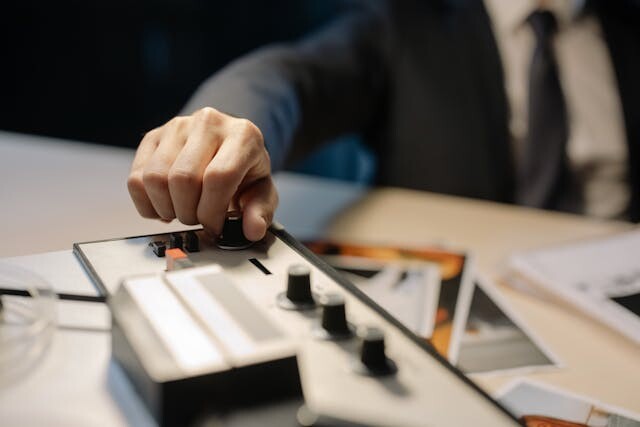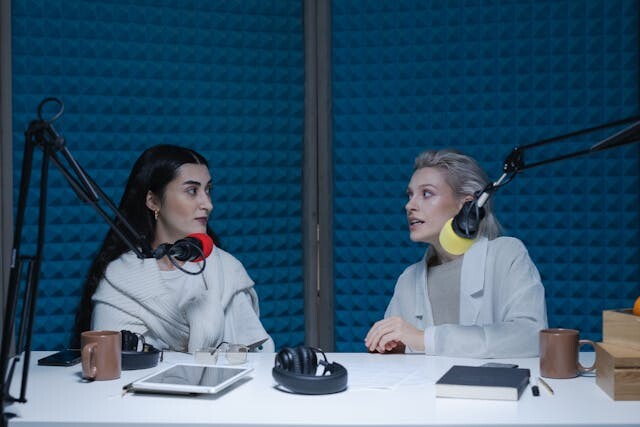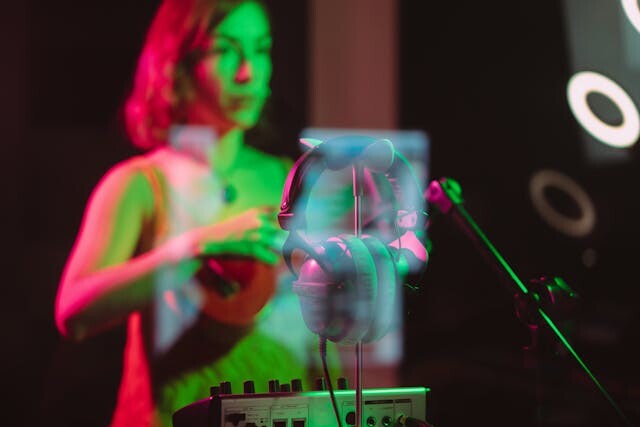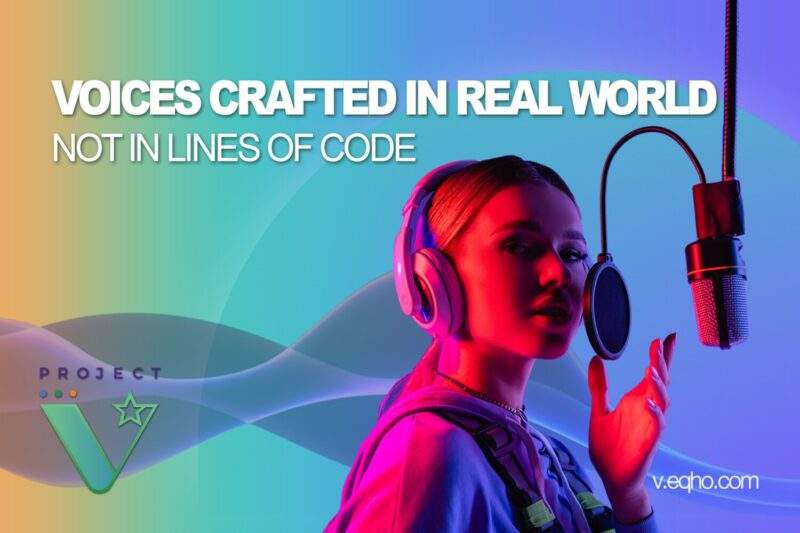In today’s digital age, where technology continues to advance at a rapid pace, the lines between reality and artificiality are becoming blurred. One such example is the emergence of AI-generated deepfake voices, especially in the multimedia industry where voiceovers play a crucial role.
What is AI-Generated Deepfake Voice?
A voice deepfake employs artificial intelligence to replicate a person’s voice by analyzing their speech patterns, pitch, speed, rhythm, and accent. This AI technique is trained with voice recordings of the target speaker to generate a synthetic voice that sounds remarkably similar.

Photo courtesy of Pexels/ cottonbro studio
For instance, David Guetta combined two AI tools to create an Eminem-style verse played with Eminem’s deepfake voice at a concert. (Source).
Synthetic voices are created using AI-powered Text-to-Speech (TTS) technology, utilizing concatenative TTS, which builds libraries of words and sounds from audio recordings, or parametric TTS, which uses statistical speech models. With just a few minutes of recorded speech, AI can generate audio datasets to train a model to read any text in the target voice.
–
Example of AI-Generated Voice (below)
–
Example of Authentic Human Voice (below)
While it has entertainment and accessibility benefits, it also poses ethical risks like fraud and misinformation. As AI improves, telling real voices from fake ones gets harder, so it’s crucial to be cautious when listening to audio to ensure authenticity and trust.
| Pros | Cons |
| 1. Entertainment Value | 1. Misuse Potential |
| 2. Accessibility | 2. Ethical Concerns |
| 3. Language Translation | 3. Trust and Authenticity |
| 4. Creative Freedom | 4. Legal Implications |
| 5. Research and Development | 5. Psychological Impact |

Photo courtesy of Pexels/ cottonbro studio
As a provider of high-quality human voiceovers for multimedia projects in multiple languages, we understand the importance of authenticity and integrity in voice recordings. That’s why we believe it’s essential to equip our clients with the knowledge to distinguish between genuine human voices and AI-generated deepfakes.

Photo courtesy of Pexels/ Los Muertos Crew
Here’s a list of tech tip to help you spot AI-generated deepfake voices:
- Listen for Inconsistencies in Speech Patterns and Emotions: Pay close attention to the consistency of speech patterns throughout the recording. Genuine human voices often exhibit subtle variations in pitch, tone, and emotional expression that AI-generated voices may (not yet) advance to replicate 100%.
- Assess Natural Tone of Voice: Human speech, in most cases, is natural and fluid, characterized by pauses, breaths, and imperfections that lend authenticity to the communication process – connecting human touch to audiences. AI-generated voices may sound perfectly polished or robotic, lacking the natural feel and flow of genuine human conversation. Listen for any unnatural pauses, abrupt transitions, or robotic cadences that may indicate the presence of AI manipulation.
- Evaluate Pronunciation and Articulation: While AI models are trained on vast datasets of human speech, they may still struggle with uncommon words, regional accents, or specialized terminology. Listen closely to any instances of mispronunciations, awkward phrasing, or unnatural emphasis that deviate from typical human speech patterns.
- Verify Source and Context: When in doubt, verify the source and context of the voice recording. Genuine human voiceovers are typically sourced from professional voice artists with verifiable credentials and portfolios. Additionally, consider the context of the recording and whether it aligns with the expected behavior and communication style of the purported speaker.
- Utilize AI Detection Tools: As ironic as it may seem, technology can also be leveraged to detect AI-generated deepfake voices. There are a variety of AI detection tools and software applications available that utilize advanced algorithms to analyze voice recordings for signs of manipulation or artificiality. While not foolproof, these tools can provide an additional layer of scrutiny and validation.
In conclusion, the rise of AI-generated deepfake voices presents a unique set of challenges for multimedia projects requiring authentic human voiceovers. By employing the aforementioned tech tip, you can better equip yourself to discern between genuine human voices and AI-generated voices.

At Project V powered by EQHO, we remain committed to delivering high-quality human voiceovers that capture the true essence and authenticity of human expression.



